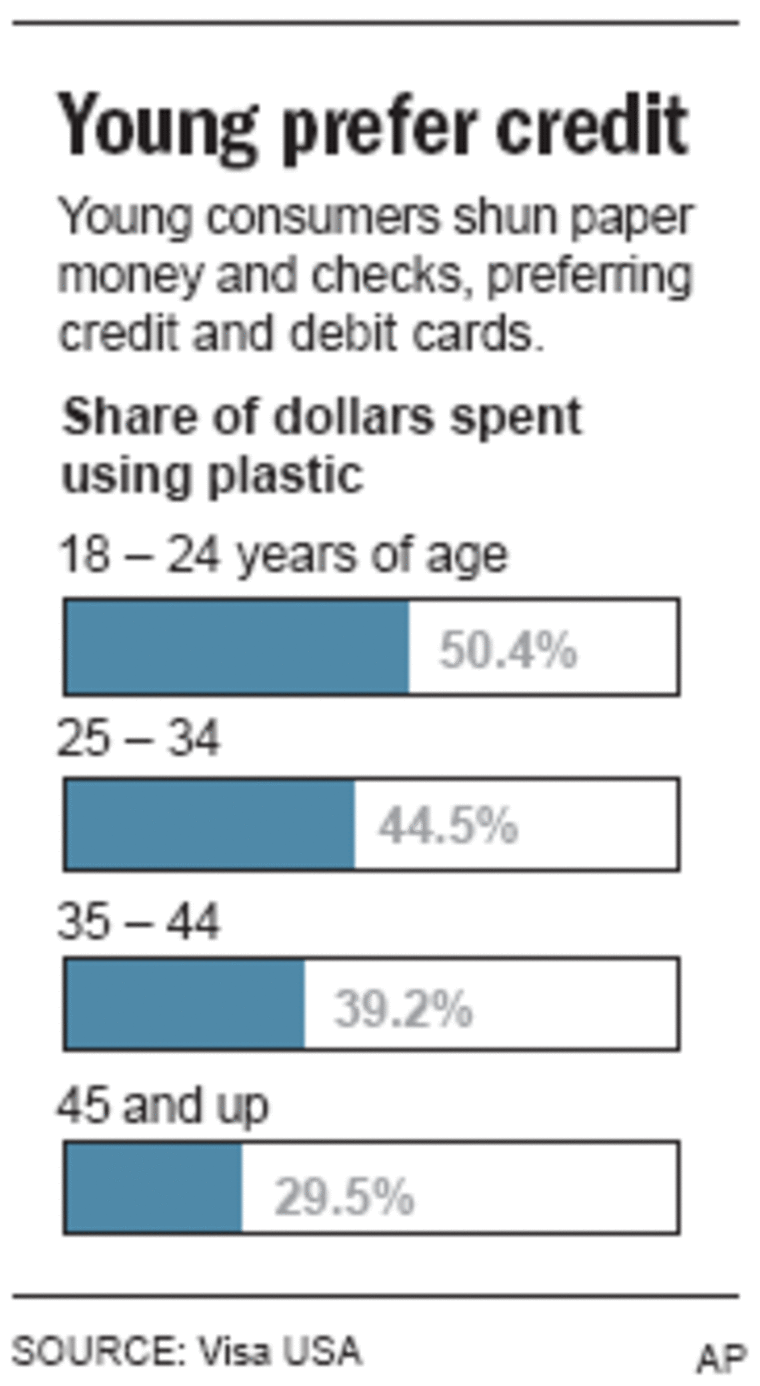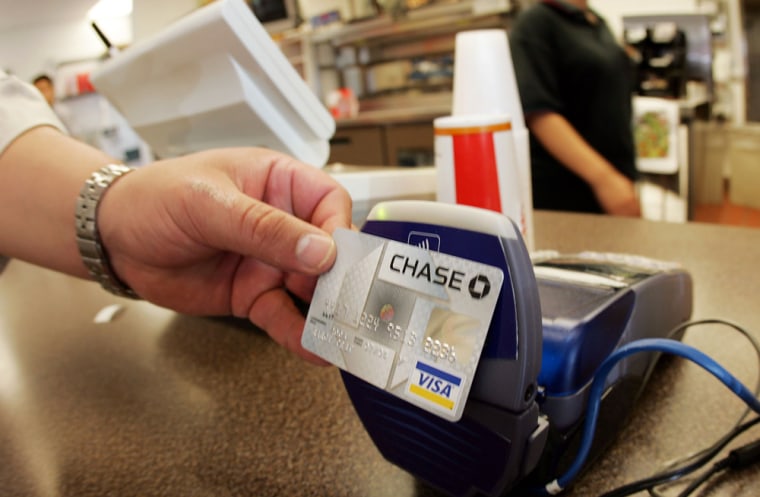Erica Jostedt loves to shop, but she hates paying with cash or a check. There's rarely more than $20 in her wallet and she doesn't carry around her checkbook because she usually needs it just once a month to cover the rent at her San Francisco apartment.
"I get so annoyed when I go into a place that only takes cash that usually I end up going somewhere else," she said.
Jostedt, 24, was born in the 1980s, the leading edge of a generation that is shunning paper payments like no other before it.
These young consumers so consistently reach for debit and credit cards that Visa USA has anointed the age group "Generation Plastic," or "Gen P."
Their habits are driving even more merchants to accept debit and credit cards, fueling legal battles over the fees underlying the cards and raising more concerns about the nation's shriveling savings rate.
Plastic payments — including online commerce — now account for 50.4 percent of the spending among consumers ranging from 18- to 24-years-old, with cash and checks making up 41.1 percent of their spending. Consumers 25 to 34 years old spend about 45 percent either way, while everyone older still uses cash and checks at least half the time, according to Visa, the nation's largest payment network.

"All paper-based payments are in retreat," said David Robertson, publisher of The Nilson Report, a newsletter that's been following spending trends since 1970. "People of a certain age don't even know where their checkbook is."
Judy Jostedt, Erica's 55-year-old mother, isn't so sure that's a good thing. Although she uses debit cards more frequently, Judy still writes about a dozen checks each month, partly because she feels her canceled checks help her monitor spending.
"I guess I'm a dinosaur," she said. "I worry that kids today don't even know where all their money is going every month."
As a whole, Gen P isn't using credit cards any more frequently than other age groups, but depends more heavily on debit cards. Gen P uses debit cards to pay for 28.2 percent of their purchases compared to just 7.1 percent among those older than 45, according to Visa.
Debit cards — which avoid debt by withdrawing the purchase amount from a consumer's bank account — were used to pay for an estimated 23.1 billion transactions nationwide during 2005, surpassing the estimated 20.3 billion transactions paid by credit card, according to The Nilson Report.
But consumers tend to spend more with credit cards, which paid for an estimated $1.75 trillion in purchases during 2005 compared to an estimated $872 billion on debit cards, The Nilson Report estimated.
Even though they aren't directly adding to consumer debt, debit cards are diminishing the nation's already paltry savings rate, said Howard Dvorkin, president of Consolidated Credit Counseling Services. That's because consumers paying with a plastic card tend to spend substantially more than someone paying with cash or check, Dvorkin said.
So even if they aren't increasing their debt by buying with a credit card, consumers who use debit cards might wind up with less money to save than they would if they paid for things with cash.
"There's no pain involved when you pay with plastic," Dvorkin said. "But there is some pain when you go out and you have to part with cash. You worked hard for that green stuff and you aren't as apt to spend it."
That's not how Alicia diVittorio sees it. The 24-year-old living in San Francisco believes her preference for debit cards is helping her to save more money because "if you are walking around with some cash in your wallet, you are going to spend it."
Visa hasn't analyzed how debit card usage affects consumer saving rates, but one of the nation's largest banks is trying to address the issue.
Bank of America now offers a service that automatically rounds up each debit card transaction to the nearest dollar and then transfers the difference from the purchase price into a consumer's savings account.
Under the program, a Bank of America customer who used a debit card to buy a sandwich for $4.24 would have 76 cents transferred into a savings account. As an incentive to sign up for the program, Bank of America matches the amount contributed to savings during the first three months.
That's just one of the many ways banks have been encouraging younger consumers to pay with plastic. Visa touts a prepaid "Buxx" card with a strict spending limit as a smart way to teach kids about personal finance, while American Express' efforts to connect with younger consumers include an "In" card that provides special privileges at nightclubs and bars in New York, Chicago and Los Angeles, and its tech-savvy Blue card.
MasterCard, meanwhile, has been aggressively expanding its PayPass program, which relies on radio frequencies to allow consumers to pay by tapping a credit or debit card on a terminal. MasterCard is setting up PayPass terminals in fast-food restaurants, convenience stores and vending machines.
The penchant for plastic has intensified the pressure on merchants to accept debit and credit cards, propelling a recent push to lower the fees paid to card companies. Fees for processing those transactions average $1.74 for every $100, according to The Nilson Report.
Merchants have filed dozens of class-action lawsuits against Visa and MasterCard, alleging they have illegally conspired to fix the fees. Visa and MasterCard have steadfastly denied the allegations.
Driven by the demands of younger consumers, more mobile payment options are likely to be introduced in the next three to five years, said Elisabeth Buse, Visa's executive vice president of product development and management.
The innovation and demographic trends won't necessarily push checks into obsolescence.
"People are going to continue to repay their credit card (balances)," Robertson of The Nilson Report said. "That means checks will increasingly become a means of repayment for everything people buy on their credit cards."
